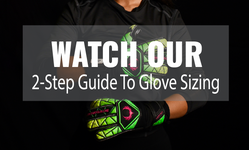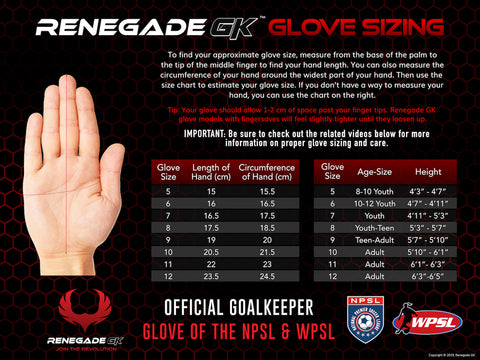Everyone makes mistakes. The problem is when a keeper makes a mistake, it can have drastic consequences. That makes it super important for all goalkeepers to constantly monitor their mistakes and try to make the necessary improvements. We’ve put together a list of Six common mistakes that we see a lot of goalkeepers (including professionals!) making.
Bad Footwork
It sounds counter-intuitive but footwork for a goalkeeper is just as important to making successful saves as the other, more obvious factors. Many younger keepers completely forget their footwork and focus too much on trying to make the dive from one spot.
But remembering your footwork is incredibly important to remember. You need to be constantly thinking about how your feet are positioned. Are you able to make a dive to far post if necessary? Are your legs crossed? Are you on the balls of your feet ready to go?
If footwork is something that you struggle with, we’ve put together a guide to help you improve.
Arm Placement
Again, this may seem like a small insignificant thing, but the position of your arms before you attempt a save can give you those crucial few inches that you need to get a finger to the ball and tip it past the post. You always need to keep your hands prepared for the shot.
Ideal placement is just above and beside the knees when you are in a crouched position, generally around your waist. Not behind the knees but slightly forward and not too low to the ground. This allows you to reach high or low depending on the shot placement.
Catching the ball incorrectly
When the ball comes to you, you need to be able to catch it. Most keepers train this extensively. But what they might ignore is the ability to hold onto the ball once you’ve caught it and not let it spill back into play.
The key here is putting the ball between your hands and your body. Hands should not be either side of the ball, but should be around the front of the ball, using your arms to help protect the ball when you land (if you’ve just made a dive).

Not diving towards the ball
Instead of waiting for the ball to come to you, all goalkeepers should be actively training to naturally move towards the ball when diving for it. This allows you to “attack” the ball and also prevents you from falling backwards and exposing or possibly dropping the ball after saving it.
This also helps you to narrow the angle between the ball and the goal face. Note that it’s almost impossible to do this every single time, but the more often you can do this the better.
Goal position

It’s always a struggle for a keeper to know where they need to be in relation to the goal. It’s something that comes naturally with experience but there are a couple of things that can make a huge difference:
Not listening to the coach
It’s not unusual to hear about someone ignoring the coach. Usually it’s pretty obvious once the coach starts yelling during the match. It’s all too tempting to players (especially younger players) to think that they know better because they know their own abilities. It’s common to overestimate (or even underestimate) your own abilities.
But this isn’t just a soccer tip. It’s a life tip. Listen to the experts. They are experts for a reason. Don’t think that you know better than them. Sure sometimes they might be wrong and you might be right. But 9/10 times a good coach will be right on a more consistent basis. Every coach will have something to offer you if you are open to hearing it and learning from it.
This might seem like a lot to handle, but it’s good to remember that a lot of the common mistakes can easily be corrected over time. A lot of the mistakes on this list can naturally be improved with experience and consistent training. Talk to your coach and if you recognise something that you struggle with ask them if you can work on it more in training.









